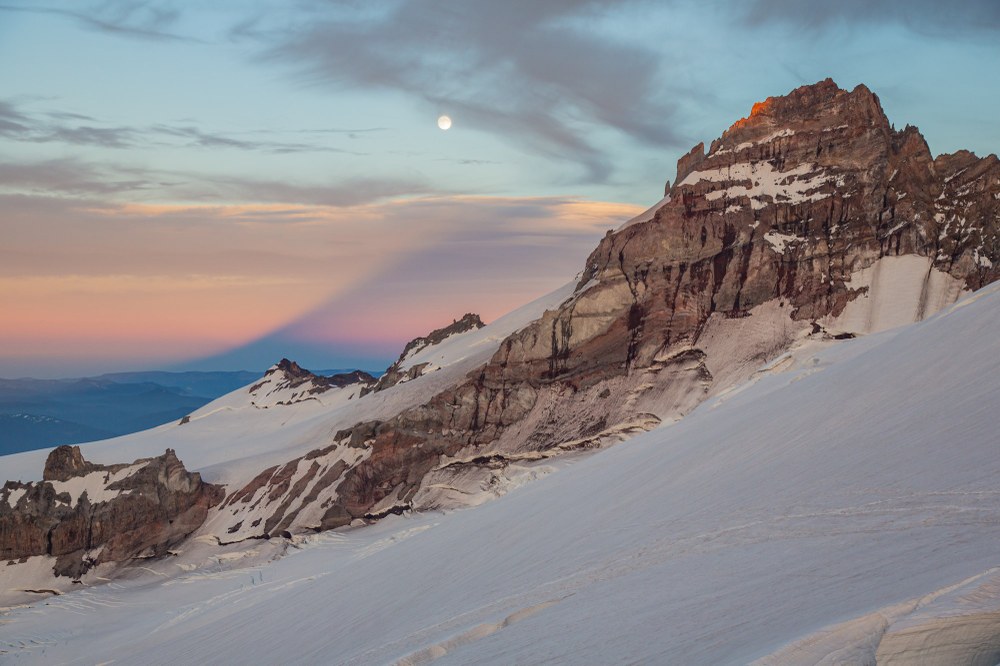
When preparing for a new alpine summit, most people know to increase their targeted exercise. However, it’s equally important to consider your mental and skill-based preparation. This will allow you to feel calm, confident, and practiced on your summit day. Below are a few strategies to help you get ready:
Add a long day. On a climb of Mt. Rainier, you may be climbing as long as 12-18 hours. If your hikes generally last 4 hours, how do you know whether you can endure triple that? Including a training day that’s similar in length to your summit push will help you prepare your feet, shoulders, and mind for the extreme endurance needed.
Hydrate and fuel often. Consider setting a watch or phone alarm on your hikes to get into the habit of having a light snack and drinking every 30-45 minutes. Keep food and drink accessible so that you don’t have to stop and remove your backpack whenever the urge to nibble strikes.
Be familiar with your gear. For alpine starts you will be putting on crampons in the dark, tying knots by headlamp with cold fingers, and doing tasks on minimal sleep. Be as familiar with all of your equipment and gear as possible so that simple tasks do not use up precious energy or brainpower. Save it for the climb.
Have a mantra. Have a song you replay in your head or a saying you repeat to yourself if you get overwhelmed. On Kilimanjaro I used “Inch by inch, it’s a cinch” for the final push to the summit. And on Mt. Rainier I have used, “20 breaths, then look around.” Small moment-by-moment goals help keep you focused and avoid a sense of being overwhelmed.
Train like you will travel. If you always listen to music or podcasts while hiking, include several hikes without earbuds so that you don’t rely on entertainment during your objective. Likewise, if you always use two poles, train with one so that you will be comfortable with carrying your ice axe in one hand.
Hone your skills. The more familiar you are with the technical skills required on the trip - roped travel, putting on crampons in the dark, self-arresting - the less brain power they require. Having an extra day at high camp to acclimatize and practice skills can make everyone on your team more tuned-in, relaxed, and ready for summit day.
Know the route. Know what is expected of you and what the route will entail, including the terrain, plans for rest breaks, and tricky navigation or technical areas. By understanding what you will face, you remove some stressful unknowns and approach the day with confidence. Study previous trip reports, talk with other climbers who have done the route before, ask rangers at camp, and even chat with descending climbers.
By implementing these strategies in the months leading up to your summit day, you put yourself in the best possible position for success. Preparation is about more than just physical training – you must be mentally and emotionally ready as well. Trust yourself and your team, and good luck!
Courtenay Schurman is an NSCA-CSCS certified personal trainer, Precision Nutrition Level 2 Certified Nutrition Supercoach, and co-owner of Body Results. She specializes in training outdoor athletes. For more how-to exercises or health and wellness tips, visit her website at www.bodyresults.com or send a question to court@bodyresults.com
Lead image of Little Tahoma during sunset.
This article originally appeared in our Summer 2022 issue of Mountaineer magazine. To view the original article in magazine form and read more stories from our publication, visit our magazine archive.
 Courtenay Schurman
Courtenay Schurman